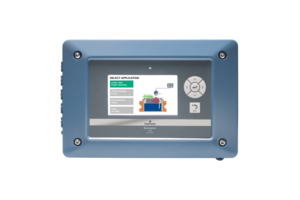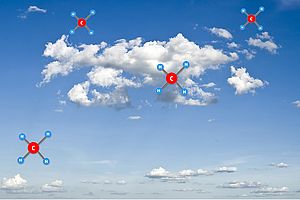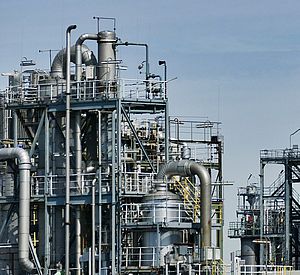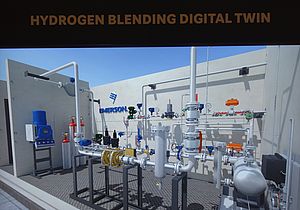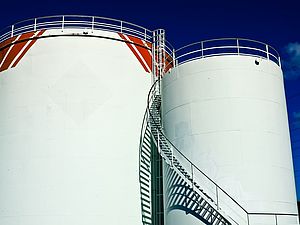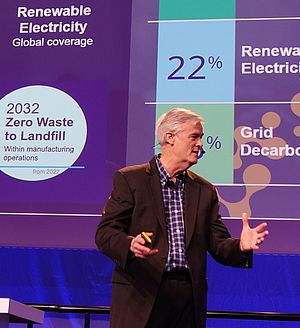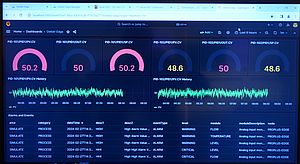Chemical manufacturers depend on accurate and reliable pressure measurements in applications such as reactors, distillation columns, heat exchangers and storage tanks, to help optimise processes and ensure plant and worker safety. Some pressure measurement applications are relatively straightforward, which enables continued deployment of older and relatively basic instrumentation. However, in more critical and complex applications, the functionality provided by modern, advanced technologies create some significant benefits, including reduced costs and increased safety.
Distillation columns
For example, pressure measurements are vital for the operation of distillation columns, but the size of these columns can make it complex and costly to install and maintain measurement devices. For many years this application has relied on differential pressure (DP) transmitters in wet leg and dry leg systems. These devices, which use impulse piping as well as capillary-based solutions, are well-understood, but have certain disadvantages. For example, impulse lines are prone to plugging and can freeze in extreme cold, while DP transmitters with remote seals and capillaries have a limited measurement range and are difficult to install. Capillary systems are complicated to calibrate and maintain, have a relatively slow response time, and are sensitive to temperature changes, vibrations and physical stress. Capillaries are also fragile and prone to damage from physical impacts. If a seal is damaged, the complete capillary system must be replaced, which makes inventory costs high. With all these challenges, the cost of installing a DP transmitter with capillaries can be five times higher than the cost of the device itself.
A better alternative is a measurement system based on electronic remote sensors (ERS), such as the Rosemount™ 3051S ERS System from Emerson. Rather than using a single DP transmitter with mechanical impulse piping or capillary, ERS systems use two pressure sensors connected with nonproprietary electrical wire that is immune to the effects of temperature variations. The DP is calculated in one of the two sensors and transmitted to the distributed control system or a PLC using a standard two-wire 4-20 mA HART® signal. By removing mechanical connections, ERS systems not only provide a faster response time than traditional DP technologies but are also easier to install and maintain, thus reducing costs. Replacing difficult-to-install impulse piping with electrical wire makes installation quicker and 60% less costly compared to DP transmitters with capillaries. Additionally, while cold weather installations of impulse piping and capillaries often require heat tracing or insulation to prevent freezing, electrical wire does not require heat tracing or insulation, which significantly reduces installation costs.
High pressure and vibration
In applications with high levels of pressure and vibration, mechanical instruments such as Bourdon tube gauges are typically used to provide pressure monitoring and control. These simple devices can be cost-effective in some applications but have limitations that make them less suitable for critical applications where high accuracy, real-time monitoring and data integration capabilities are vital. Extreme temperatures, humidity, vibration and shock can make Bourdon tube gauges difficult to read, possibly leading to inaccurate readings which could affect product quality and profitability. Bourdon tube gauges are also sensitive to overpressure and lack diagnostics, creating a safety risk for personnel. In challenging applications, they may require additional options such as syphons, seals and glycol fill, which raises costs. In addition, their components wear out over time, creating a high failure rate and necessitating regular maintenance and calibration. Furthermore, mechanical gauges provide only a visual display and lack digital output options, which means that time-consuming and error-prone manual readings are required. To support increased reliability, electronic wireless devices, such as the Rosemount Wireless Pressure Gauge from Emerson, replace Bourdon tube gauges with a solid state pressure sensor based on piezoresistive technology. Wireless gauges provide correct pressure information even in high-pressure and high-vibration environments, and reduce costs by delivering up to 10 years of maintenance-free operation. These devices feature a large dial, making it easy for personnel to accurately read pressure levels, while a blinking diagnostics LED indicates that a device is operating correctly. In addition, WirelessHART® communication technology enables them to deliver reliable pressure readings and device health status back to the control room as often as once per minute, supporting the central logging of historical data, improved maintenance planning and reduced costs.
Safety
Safety instrumented systems (SIS) are another challenging and critical application, requiring high levels of accuracy, repeatability and reliability. Pressure transmitters deployed in SIS must be regularly proof-tested to verify that they are working correctly and comply with safety standards. Performing a proof-test has traditionally been a timeconsuming, labour-intensive and costly procedure. However, the latest devices provide guides to easily lead operators through a step-by-step process outlined by the transmitter’s software or a handheld communicator, which saves time and reduces both complexity and costs.
Poorly performing pressure transmitters can impact safety and operational efficiency, so issues need to be identified quickly. To enable this, advanced instruments feature built-in diagnostics to continuously monitor electrical loops and impulse lines. Issues can then be identified and alerts transmitted quickly, enabling corrective measures to be taken before process quality is impacted. The early detection of issues also enables maintenance to be scheduled during planned downtime, to minimise disruption and avoid additional costs.
Mass deployment
Thousands of pressure transmitters can be deployed in a large chemical plant, so configuring them all can be time-consuming and costly. However, the Rosemount 3051 Pressure Transmitter from Emerson includes features that makes it easy to install, commission, configure, maintain and use. A user interface provides a straightforward, task-based menu structure, enabling quick configuration in just a couple of clicks, saving a great deal of time and significantly reducing costs. The device offers Bluetooth® connectivity to reduce complexity further. This eliminates the need for a physical connection via a cable, which enables configuration and maintenance to be performed from a distance. This is especially beneficial if devices are installed on large storage tanks or distillations columns.
Author: John van Gorsel, Emerson





